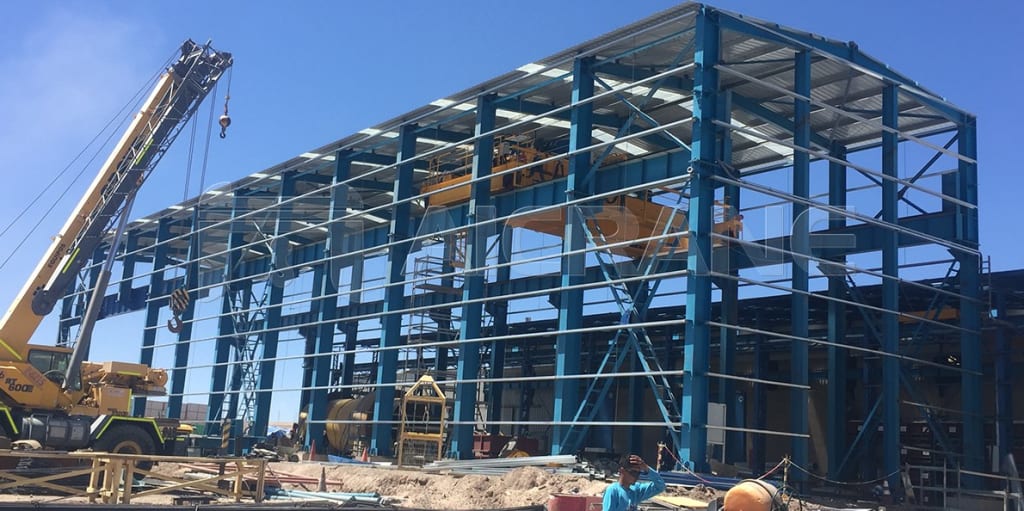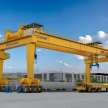The Cost-Effectiveness of Steel Structure Workshops Versus Traditional Construction Methods
Balancing Initial Investment with Long-Term Benefits in Modern Construction

In the realm of construction, the choice of building materials and methods plays a crucial role in determining the overall cost and efficiency of a project. One such debate that has gained prominence is the comparison between steel structure workshops and traditional construction methods. In this article, we will explore the cost-effectiveness of steel structure workshops in comparison to traditional construction methods.
Advantages of Steel Structure Workshops:
Material Cost and Availability: Steel is a cost-effective material due to its availability and recyclability. Unlike traditional construction materials such as wood or concrete, steel can be sourced consistently at competitive prices. Additionally, the recycling process of steel reduces the demand for new raw materials, making it an environmentally sustainable choice.
Construction Time: Steel structures are known for their quick assembly and construction. Prefabricated steel components can be manufactured off-site, allowing for faster on-site assembly. This can significantly reduce labor costs and overall construction time compared to traditional methods, where each component is often built on-site.
Durability and Longevity: Steel is inherently durable and resistant to various environmental factors. Unlike wood, it is not susceptible to rot, termites, or other pests. This durability translates into a longer lifespan for steel structure workshops, minimizing the need for frequent repairs and maintenance that may be common with traditional construction methods.
Design Flexibility: Steel offers greater design flexibility, allowing architects and builders to create innovative and complex structures. The versatility of steel components makes it easier to adapt to specific project requirements, providing a wider range of design possibilities compared to traditional methods.
Reduced Foundation Costs: Steel structures are generally lighter than their traditional counterparts, leading to reduced foundation requirements. This can result in cost savings both in terms of material and labor, as well as a quicker foundation construction process.
Challenges and Considerations:
Initial Cost: While steel may be cost-effective in the long run, the initial upfront cost can be higher than traditional construction methods. This cost may include the fabrication of steel components, transportation, and assembly. However, it is essential to consider the long-term benefits and savings that steel structures offer.
Aesthetics: Some critics argue that steel structures may lack the warmth and aesthetic appeal of traditional construction materials such as wood. However, advancements in architectural design and finishes have allowed steel structures to overcome this challenge, offering visually appealing options.
Environmental Impact: While steel is recyclable, its production process can have environmental implications. The extraction and processing of iron ore into steel can contribute to carbon emissions. However, the long lifespan and recyclability of steel can offset these environmental impacts over time.
Energy Efficiency: Steel structures can be designed to be energy-efficient. With the integration of insulation materials and advanced construction techniques, steel buildings can achieve high levels of energy efficiency, contributing to long-term operational cost savings.
Maintenance Costs: Steel structures generally require less maintenance than traditional construction methods. The resistance of steel to pests, decay, and weathering means fewer ongoing maintenance expenses, further adding to the cost-effectiveness of steel buildings over time.
Conclusion:
In conclusion, the cost-effectiveness of steel structure workshops compared to traditional construction methods involves a careful consideration of various factors. While the initial cost may be higher, the advantages in terms of material cost, construction time, durability, and design flexibility make steel structures a compelling option for many construction projects. As sustainability becomes a more significant factor in decision-making, the recyclability of steel adds to its appeal. Ultimately, the choice between steel and traditional methods depends on the specific needs, budget, and preferences of the project stakeholders.
About the Creator
Aicrane01
Welcome to the Aicrane Blog, your practical guide to lifting solutions. Discover articles covering overhead cranes, gantry cranes, winches, steel structures, boat lifts, and more.
Website: https://steelmillcranes.com/
Enjoyed the story? Support the Creator.
Subscribe for free to receive all their stories in your feed. You could also pledge your support or give them a one-off tip, letting them know you appreciate their work.






Comments
There are no comments for this story
Be the first to respond and start the conversation.